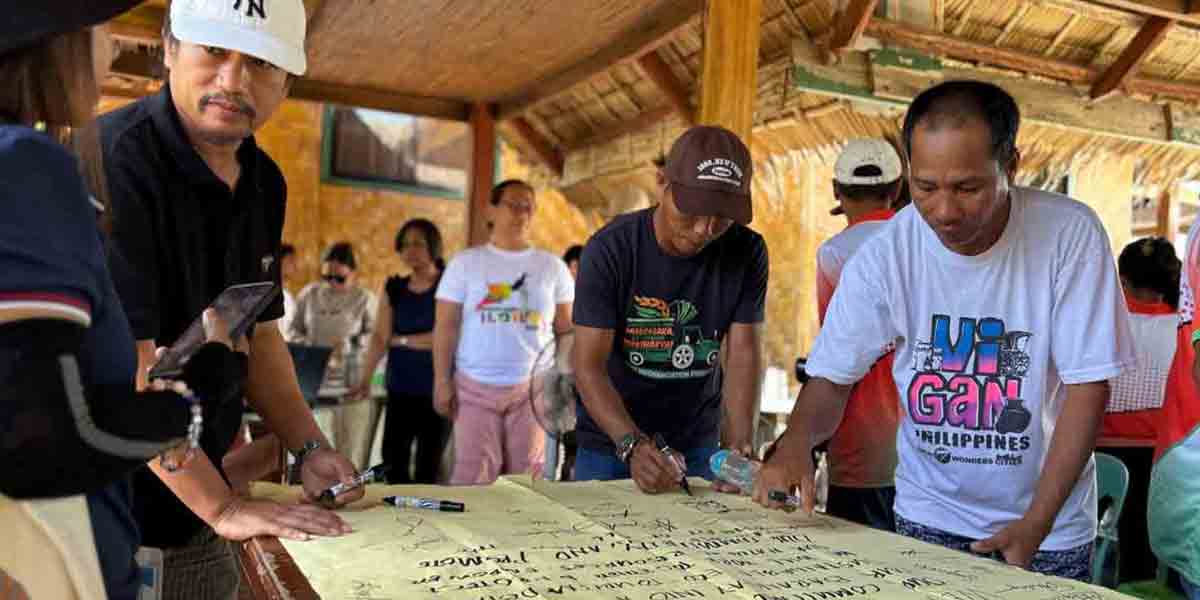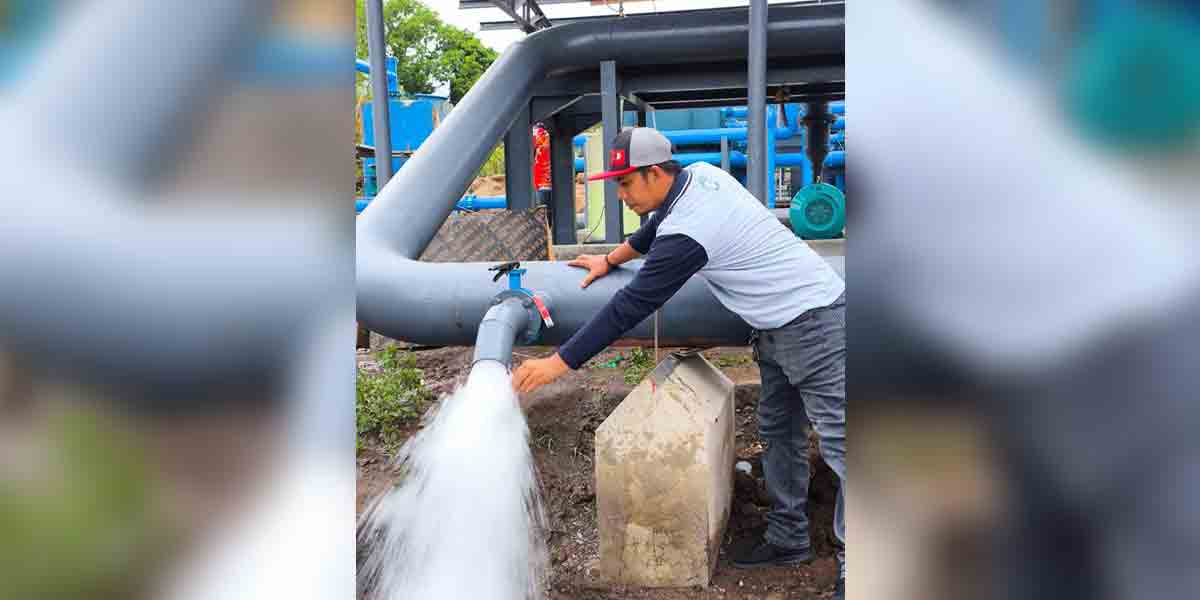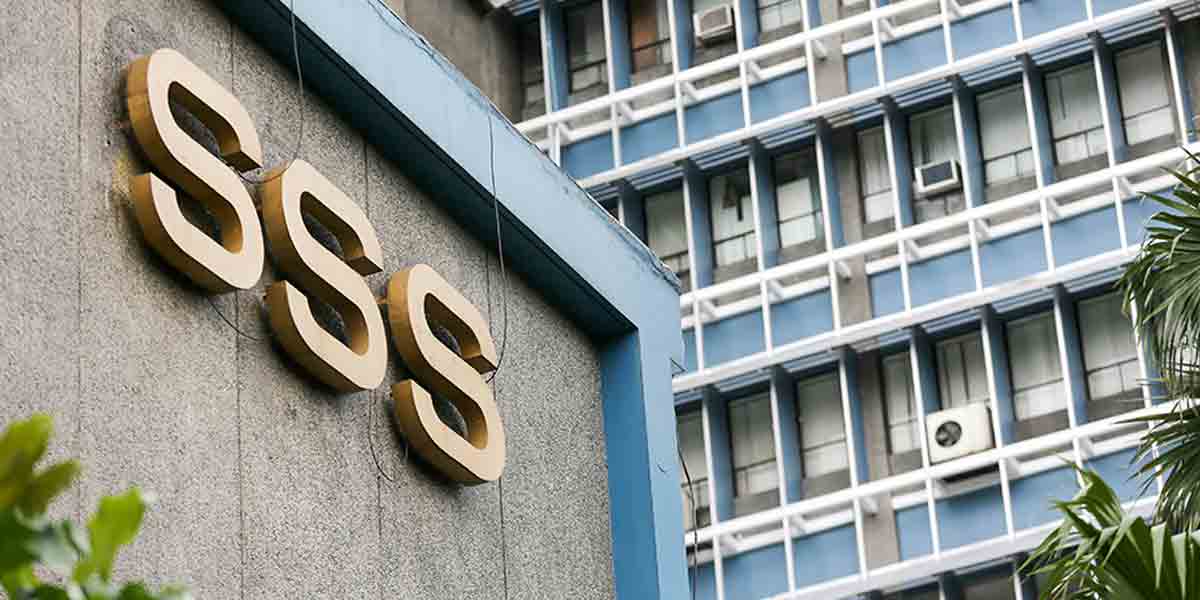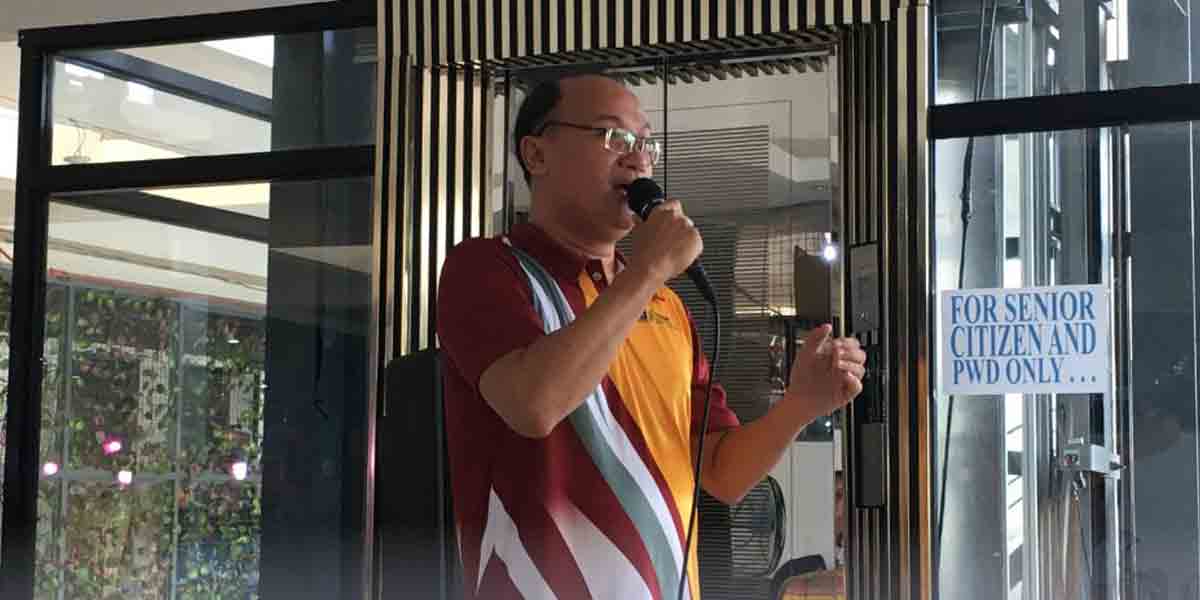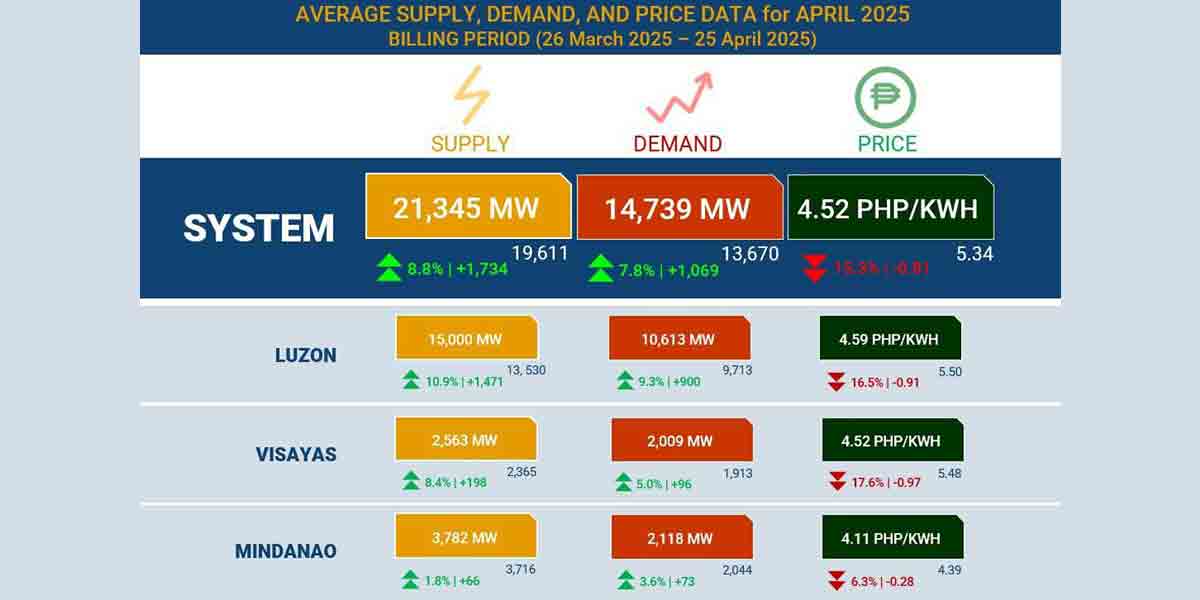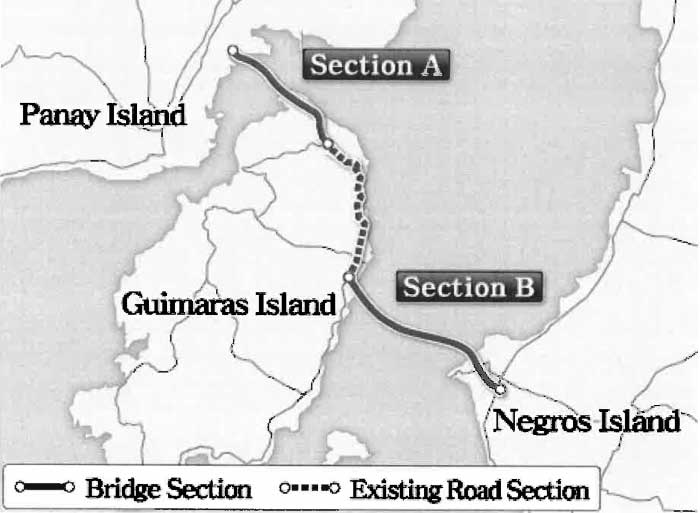
By Joseph Bernard A. Marzan
The Panay-Guimaras-Negros (PGN) bridge is the talk of the town again after President Ferdinand Marcos Jr. mentioned it as one of the priorities under the Mega Bridge Program, a branch of the greater “Build Better More” infrastructure drive of his administration.
But how much do we actually know about the project, and how did it come about? Daily Guardian explains.
The PGN Bridge, while it gained greater attention in the administration of the late former President Benigno Aquino III, started out as an idea during the administration of former President Joseph Ejercito Estrada.
It was originally conceptualized in 1999 as two separate bridges by the Japan International Cooperation Agency (JICA).
The JICA’s final report on its Master Plan Study on Visayas and Mindanao Islands Strategic Road Network Development Project dated March 1999 recommended early feasibility studies on the Iloilo-Guimaras Link.
The bridge would span a total of 23.19 kilometers (km), including the Panay-Guimaras segment (2.59 kms) and the Guimaras-Negros segment (20.6 kms), costing ₱53 billion.
But with the controversial and abrupt change of administration in 2001, President Gloria Macapagal-Arroyo made no mention of any bridge project in Western Visayas in her Medium-Term Development Plan 2004-2010.
The bridge proposal was revived by the Department of Public Works and Highways (DPWH) in 2010, although this time it was shorter, cheaper, and with more specifics.
The 3.6-km Panay-Guimaras segment would start at Leganes, Iloilo and end at Buenavista, Guimaras while the 9.56-km Guimaras-Negros segment would start at San Lorenzo, Guimaras and end in Pulupandan, Negros Occidental.
The cost for the bridge at the time was pegged by DPWH at around ₱28.5 billion – ₱9.44 billion for the Panay-Guimaras segment and the Guimaras-Negros segment at ₱19.18 billion.
VISAYAS EFFORTS
There was also an alternative proposal in 2013 by then-Governors Arthur Defensor Sr. and Alfredo Marañon Jr. to have a 14.5-km direct bridge from Banate town in northern Iloilo province to E.B. Magalona in Negros Occidental.
Then-Representative Jerry Treñas (Iloilo City-Lone) filed 3 resolutions in the House of Representatives (HOR) that only saw minimal light of day.
Treñas filed House Resolution (HR) No. 876 on January 27, 2011, urging the National Economic Development Authority (NEDA), DPWH, Department of Trade and Industry, Board of Investments, and Department of Tourism to include the PGN Bridge in Western Visayas’ Regional Development Plan (WVRDP).
He then filed HR No. 1254 on May 16, 2011 “strongly” urging the NEDA, DPWH, and the Public-Private Partnership (PPP) Center to include the bridge in the national government’s PPP program.
He also filed HR No. 2018 on December 19, 2011, again urging the PPP) Center, the DPWH, and the National Economic and Development Authority (NEDA) to prioritize the PGN bridge construction in the PPP program.
This time, HOR members from the Visayas joined in HR No. 2018 as co-authors, including Reps. Mercedes Alvarez (Negros Occidental-6th), George Arnaiz (Negros Oriental-2nd), Alfredo Abelardo Benitez (Negros Occidental-3rd), Ferjenel Biron (Iloilo-4th), Jane Castro (Capiz-2nd), Arthur Defensor Jr. (Iloilo-3rd), Antonio Del Rosario (Capiz-1st), Jeffrey Ferrer (Negros Occidental-4th), Janette Loreto-Garin (Iloilo-1st), Anthony Golez Jr. (Bacolod City-Lone), Paolo Javier (Antique-Lone), Jocelyn Limkaichong (Negros Oriental-1st), Alfredo Marañon III (Negros Occidental-2nd), Florencio Miraflores (Aklan-Lone), Joaquin Carlos Rahman Nava (Guimaras-Lone), Augusto Syjuco Jr. (Iloilo-2nd), Pryde Henry Teves (Negros Oriental-3rd), and Niel Tupas Jr. (Iloilo-5th).
The three resolutions were read on February 2 and May 23, 2011 and January 16, 2012, respectively, but all of them languished with the Committee on Public Works and Highways until the 15th Congress adjourned.
AQUINO, DUTERTE ADMINS
The bridge was then included in the WVRDP 2011-2016 and 2017-2022 of the Aquino and Duterte administrations, respectively.
The WVRDP 2011-2016 tagged the project to the DPWH and pegged the cost at ₱4.8 billion pesos, with funding to be sourced from PPP, General Appropriations Act laws, and Official Development Assistance from foreign governments.
The WVRDP 2017-2022, meanwhile, assured the development of the bridge but did not give updated details as to its cost, funding sources, and implementing agency.
The bridge was included in the Duterte administration’s flagship ‘Build! Build! Build!’ (BBB) infrastructure program, with the cost estimated by NEDA in 2018 at ₱27.15 billion.
Former DPWH Secretary Mark Villar said the bridge would be expected to be finished by 2022, or the end of the Duterte administration, and will include a ‘Phase 3’ which would connect the islands of Negros and Cebu.
following the capsizing of 2 boats in the Iloilo Strait on August 3, 2019, which led to the drowning deaths of 31 people, Senator Grace Poe filed Senate Resolution No. 75 on August 6, 2019 urging the Senate Committee on Public Works to conduct a study on the PGN Bridge.
The Senate website indicated that this resolution “died” in the committees on Economic Affairs and Public Works after the first reading on August 7, 2019.
ODA ATTEMPTS
A feasibility study was conducted by the CCCC Highway Consultants Co., Ltd., for the purpose of seeking Official Development Assistance (ODA) from the Chinese government.
A draft report by the United Nations Economic and Social Commission for Asia and the Pacific (UNESCAP) in July 2017 listed the Chinese ODA cost for the bridge at US$541.04 billion.
The results of this study in 2019 was close to the DPWH’s 2010 proposal for the bridge to jump off from Barangay Gua-an in Leganes, Iloilo, to Brgy. Cansilayan in Buenavista, Guimaras; traversing several barangays heading to Brgy. M. Chavez in San Lorenzo, Guimaras, and ending at Brgy. Tapong in Pulupandan, Negros Occidental, with linked roadways stretching to Brgy. Ubay in the latter town.
The NEDA’s Investment Coordination Committee-Cabinet Committee (ICC-CabCom) finally approved the project with the consultant’s recommendations in its December 20, 2019 meeting.
But in 2020, the bridge faced a roadblock after Senate Minority Leader Franklin Drilon, who had been the mastermind behind many infrastructure projects in the city and province of Iloilo, said that China will no longer provide ODA funding for the bridge.
The NEDA also removed the Guimaras-Negros segment of the bridge project from the BBB program.
At this time, CNN Philippines reported that the NEDA had listed the cost of the bridge at ₱65.7 billion, as part of a ₱4.13-trillion infrastructure package push by the Duterte administration.
ENTER THE KOREANS
The South Korean government came to the rescue, taking over in 2021 with a new feasibility study with a promise to fund the Detailed Engineering Design (DED) of the bridge.
At around this time, the HOR in the 18th Congress in 2021 approved the adoption of HR No. 207, substituting resolutions authored by Reps. Juliet Ferrer (Negros Occidental-4th) and Eleandro Jesus Madrona (Romblon-Lone), urging the NEDA and the DPWH to consider Valladolid town instead of Pulupandan as the entry and exit point of the Negros section of the bridge.
The country’s Korea Export-Import Bank (KEXIM Bank) in 2022 formalized their loan, granting US$56.6 million through their Economic Development and Cooperation Fund (EDCF).
HR No. 448 was filed by Rep. Salvador Pleyto Sr. (Bulacan-6th), co-authored by Rep. Romeo Momo (Surigao del Sur-1st) on September 28, 2022 to counter Resolution No. 207.
This would instead urge to endorse the implementation of the bridge based on the DED approved by the NEDA, referring to the Chinese-led feasibility study.
Momo, chairperson of the Committee on Public Works and Highways, recommended the resolution’s approval by the full House via Committee Report No. 395 dated March 6, 2023.
It had been included in the HOR’s official business in its March 14, 2023 session, but that was the last update according to the HOR’s website.
‘NEW LOOK’
So, what will the bridge look like this time?
The terms of reference obtained from the indicated that the bridge spans a total of 32,474 meters or 32.474 kilometers, with its specifications like the previous feasibility studies conducted.
It is divided into two “Sections”—Section A from Panay Island going to Guimaras Island, and Section B, from Guimaras Island to Negros Island.
Section A would have a total length of 13.004 kms, starting from the end of the planned Circumferential Road 2 (C2) in Leganes and ending at the Guimaras Circumferential Road in Buenavista with 4 lanes.
DPWH-Western Visayas Assistant Regional Director Jose Al Fruto said in a radio interview in 2020 that C2 would span from a coastal area in Leganes, traversing to Cabugao in Pavia and then to San Miguel via the Oton-San Miguel road.
The approach road on both ends has a cumulative total of 8.034 kms with 4 lanes spanning 20.7 meters in width, and also includes an embankment.
The approach bridges would have lengths of 3.24 kms and 330 meters, respectively with the use of prestressed concrete (PSC) box girders on both bridges and a PSC beam at Approach Bridge 1, with 4 lanes spanning 20.2 meters.
The main bridge is a cable-stayed bridge 1.4 kms long and 24.2 meters wide with 2 pylons where the cables hold the bridge together.
A cable-stayed bridge is a bridge that has one or two pylons where the cables are held to support the bridge deck.
Examples of cable-stayed bridges in the Philippines include the Cebu-Cordova Link Expressway and the Marcelo Fernan Bridge, both located in Cebu.
The Guimaras Circumferential Road is expected to be the main connection between Sections A and B of the bridge project, with the 19.47-km long Section B starting at its portion along the eastern part of Brgy. Cabano in San Lorenzo town.
The bridge ends at the Negros National Road near the northern part of the Pulupandan Port in its namesake town.
Its features are similar to that of Section A, having 4 lanes, with an approach road of 6.36 kms long with an embankment, approach bridges of 7.2 kms and 4.51 kms this time having PSC girders and PSC beams on both, and a 1.4-km 2-pylon cable-stayed main bridge.
FIRST STEP?
The NEDA in a February 23, 2023 press release, stated that the ₱187.53-billion PGN Bridge would start construction in 2025, with awarding of the DED contract expected in March.
But Supplemental Bid No. 4 of the DPWH dated February 27, 2023 pegged contract negotiations by May 9, and the expected start date for the consulting work on the DED by June 23.
Daily Guardian contacted DPWH-Western Visayas Assistant Regional Director Jose Al Fruto for more details, but he has yet to respond as of this writing.
Environmental concerns have already been addressed by the government. Department of Public Works and Highways-Region 6 (DENR-6) Executive Director Livino Duran told the media on July 11 that the Environmental Compliance Certificate (ECC) for the bridge had just been granted.
This was to address concerns by environmental groups that the Iloilo-Guimaras subpopulation of Irrawaddy Dolphins (Orcaella brevirostris) was being threatened by the bridge’s development.
Duran even suggested that tourist activities can be done along the bridge’s deck in relation to the troubled dolphin species.
“The biggest concern of the locals here was pertaining to the research studies on the Irrawaddy dolphins which made the duration long. We have a population of Irrawaddy dolphins in Guimaras and Pulupandan,” Duran said.
“We cannot transfer the Irrawaddy dolphins because that is their natural habitat. Later on, what we can look at is the activities there. […] We could have sightseeing at the bridge. Fisherfolk should also be given advocacy [for the dolphins],” he added.



